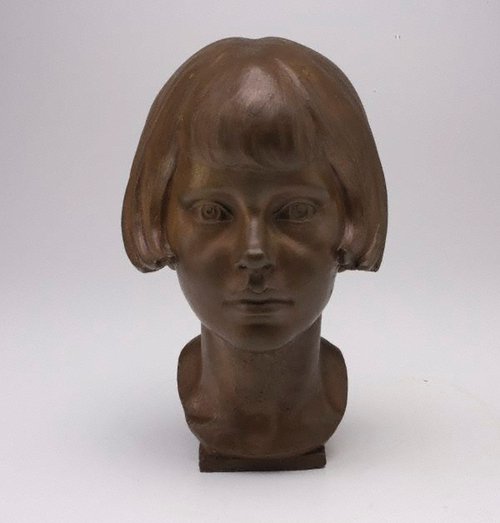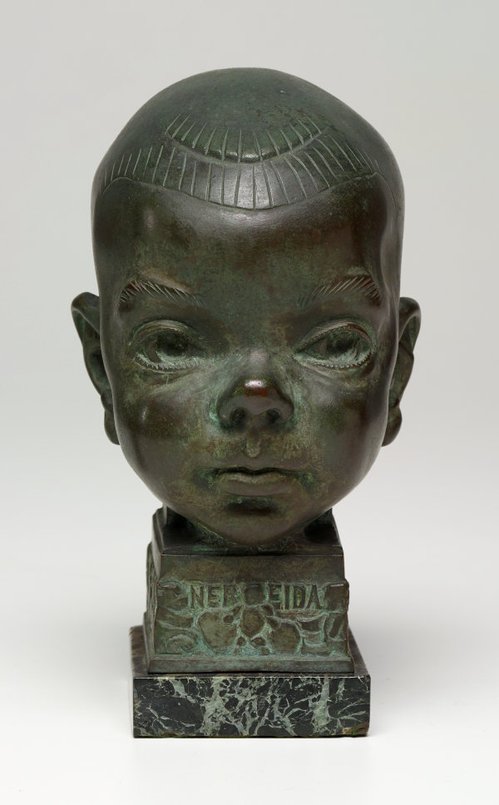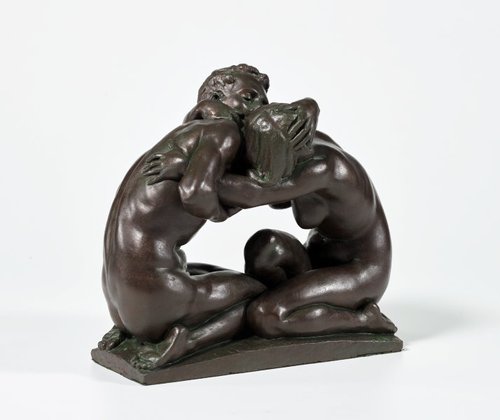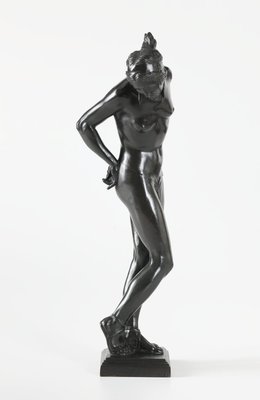
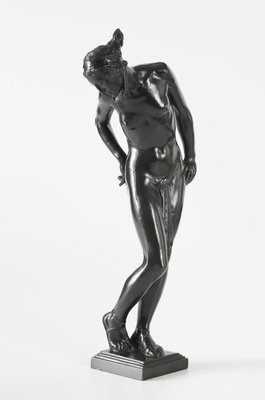
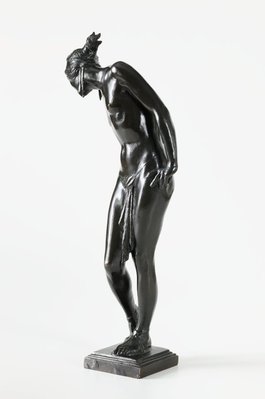
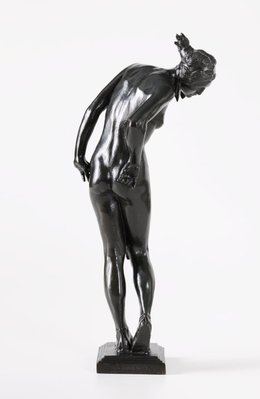
-
Details
- Date
- 1924
- Media category
- Sculpture
- Materials used
- bronze
- Dimensions
- 41.0 x 17.5 x 8.5 cm approx.
- Signature & date
Signed base 'G RAYNER HOFF'. Not dated.
- Credit
- Purchased with funds provided by the Barbara Tribe Bequest 2022
- Location
- South Building, ground level, 20th-century galleries
- Accession number
- 334.2022
- Copyright
- Artist information
-
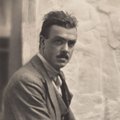 Rayner Hoff
Rayner Hoff
Works in the collection
- Share
-
-
About
The English immigrant Rayner Hoff arrived in Australia in 1923 to head the sculpture department at East Sydney Technical College. Here he established the first cohesive school of Australian sculpture. The works of Hoff’s ‘Academy’ represent a modernised Classicism, a synthesis of Greek traditions of sculpture, Art Deco stylisation and the Vitalist philosophies that espoused fundamental non-rational, “life energies” as a central force of existence. Hoff and his students produced an exceptionally group of sculptures that collectively encapsulate a muscular, eroticised ‘body energy’, and the vitalist ideal of complimentary masculine and feminine forces in life.
At a time when sculpture production was a largely male dominated practice, Hoff enlisted members of his sculpture ‘Academy’ from the ranks of predominately female artists. Barbara Tribe, Marjorie Fletcher, Eileen McGrath and Jean Broome Norton were amongst Hoff’s students and were some of the era’s most important sculptors.
Hoff’s exquisite sculpture Atalanta takes its subject from the heroine of Greek mythology. Atalanta was abandoned as a baby by a disgruntled Arcadian father who wanted a son. She survived suckled by a she-bear and grew up a hunter. Atalanta could outwrestle and outrace any man and dispatched suitors who failed to outrun her. Until she was tricked by Hippomenes. He had borrowed three golden apples from Aphrodite that he dropped in front of Atalanta as they raced. Unable to resist them, Atalanta stopped to pick them up and was beaten.
Figures of physically and sexually assertive women, imaged through the guise of Greek heroines were common in the repertoire of Hoff and his students. Here Hoff depicts Atalanta not at the point of her downfall, but in a moment of repose, in a twisting stance that shows off her athleticism. Depicted as part Greek goddess and part modern flapper, Atalanta is indicative of Hoff’s drive to modernise the figure of the Classical world in his sculpture.


